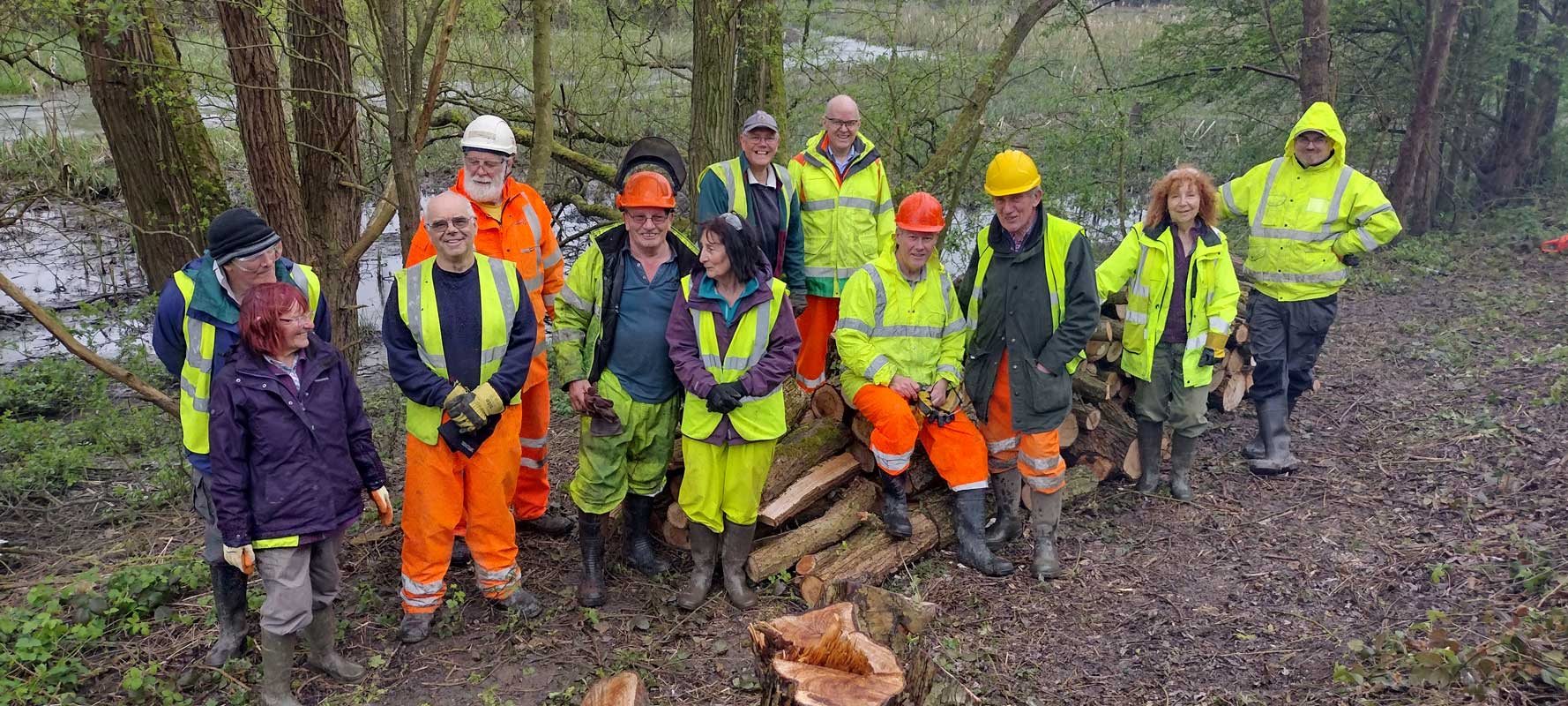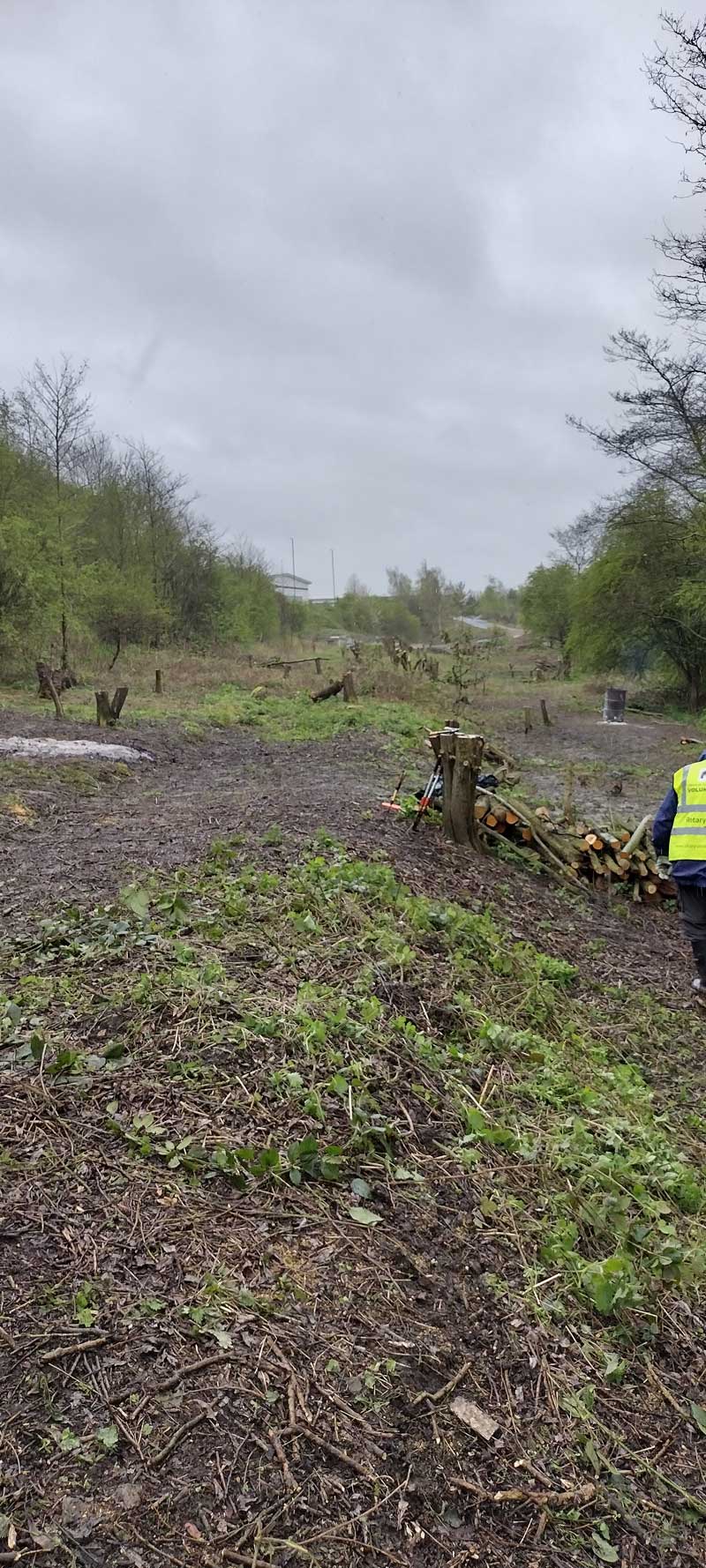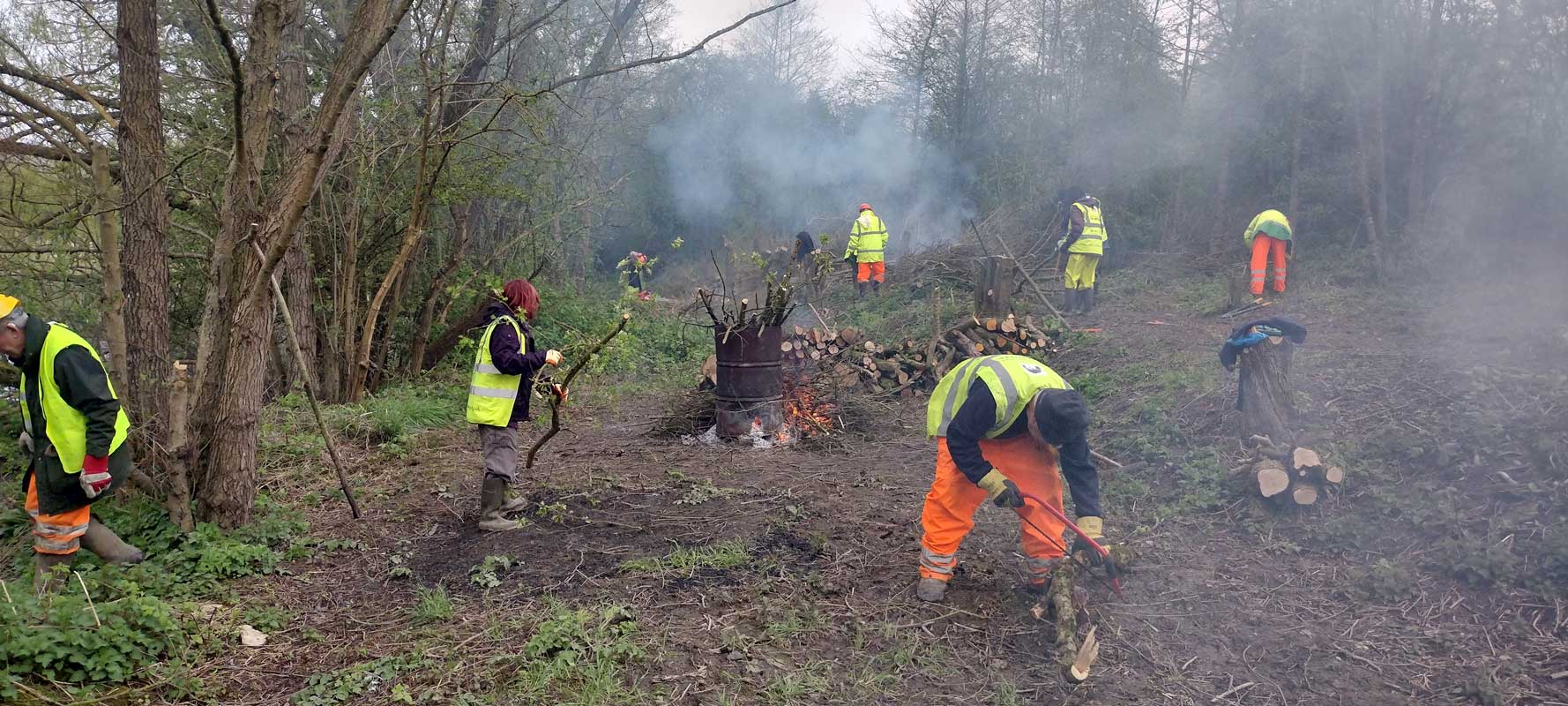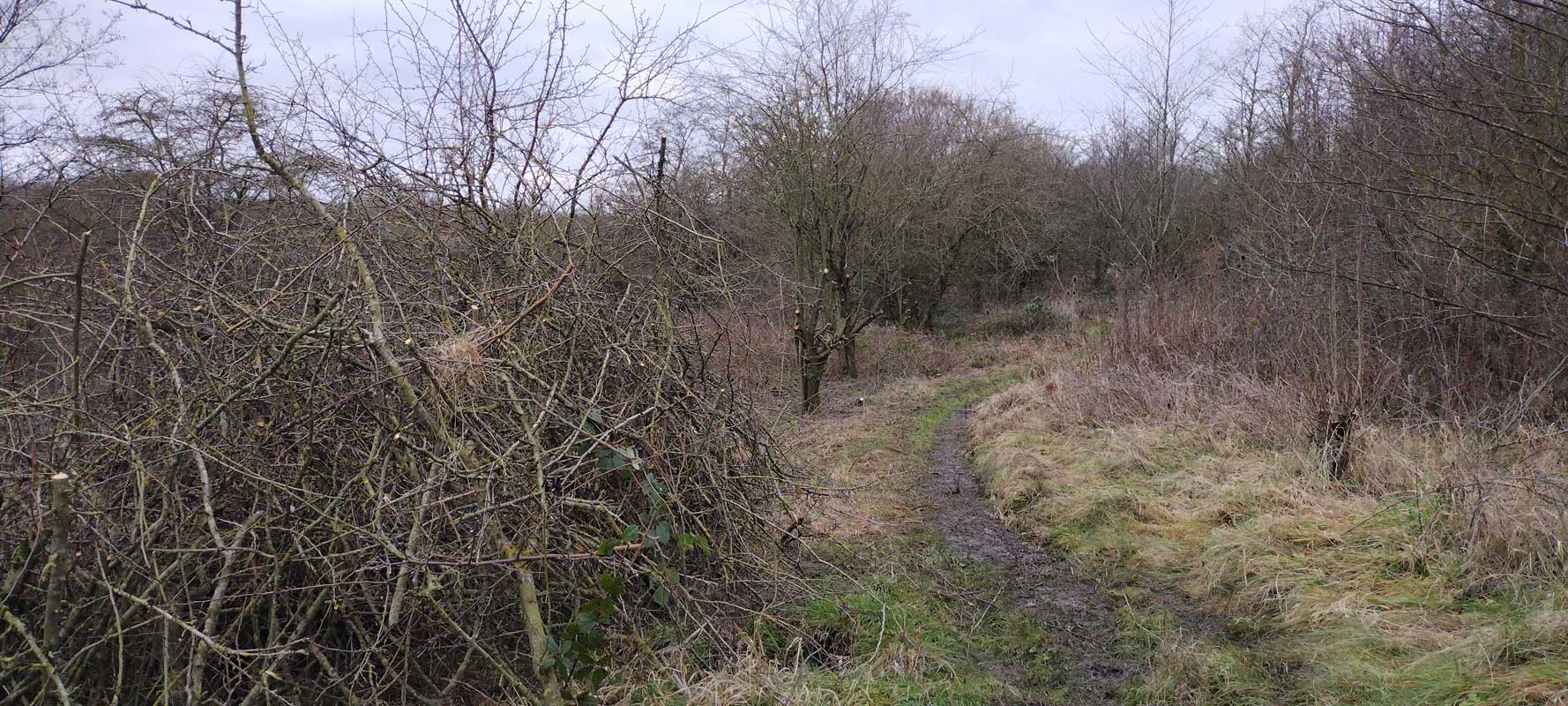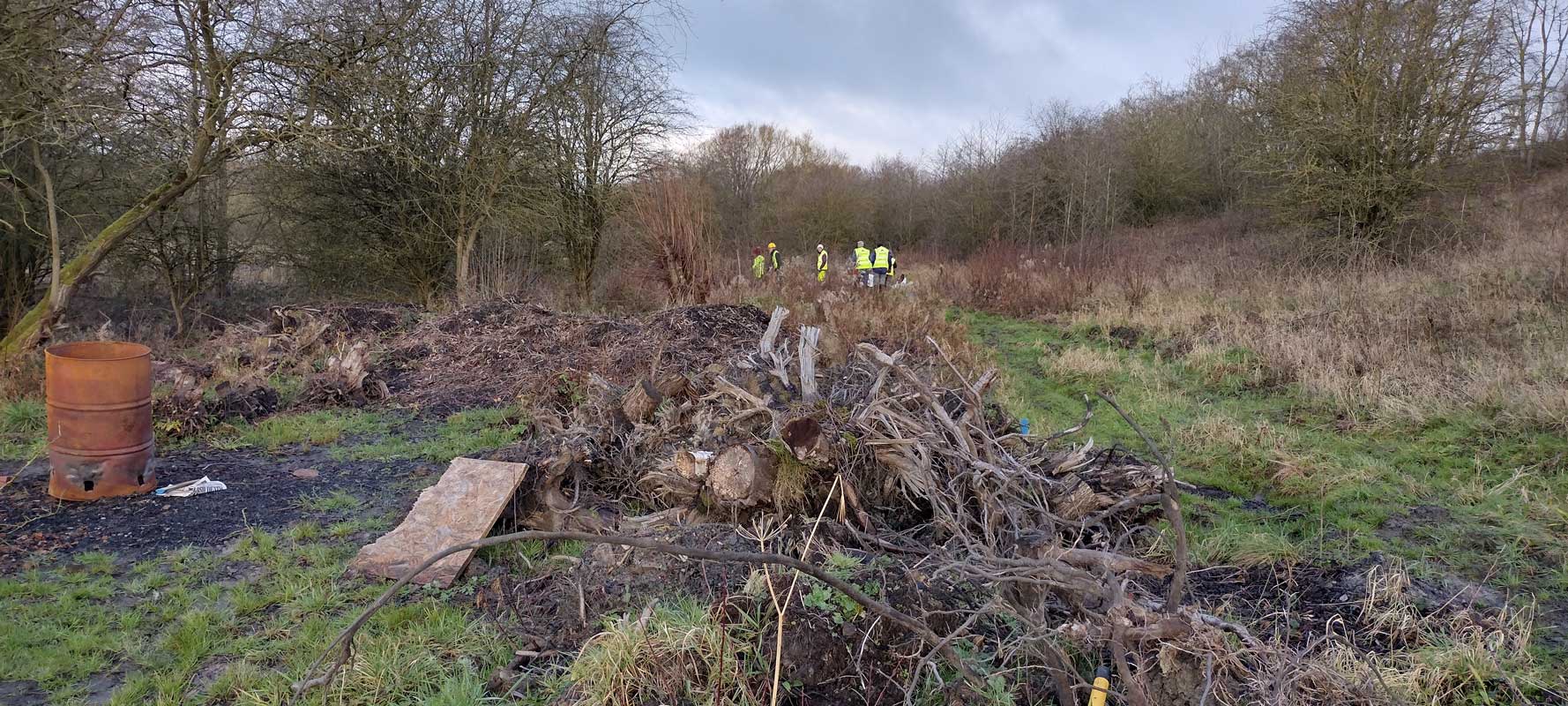By John Guyler
Well, winter is upon us with a vengeance, and as I write it’s snowing – not as heavy as the panicky press would have us believe, but it’s snowing. The FCC work parties have been out since the New Year at Beggarlee clearing the flood plain extension. Things are slowly getting into place for the summer assault.
I have been reading in the latest issue of the Waterway Recovery Group magazine Navvies a report from the November WRG group leader Pete Fleming who came over with four others for an extended weekend to complete the land drainage pipes. This article is based on that report.
The weekend was a reduced project from the one planned due to the very wet onsite conditions from the long period of heavy rain, which would have made the back-filling impossible to complete effectively.
The reason for the drainage works is because the new route of the Cromford extension up to the A610 bridge will run across what is designated as flood plain land. There is a requirement to create an alternative area for any flood water to go, hence the reason for excavating the flood compensation area. The spoil excavated from this area will be used to build up the embankments for the new canal channel.
The WRG group arrived at on the Thursday afternoon, unloaded the catering equipment and the beds and then a quick trip to the bar next door; they were in the Ironville village hall. One advantage of billeting there is that they are welcome in the Anvil Club that shares the building; there’s even a short cut straight through a doorway into the bar.
The FCC volunteers, who had been on site since day break at 7.30am on the Friday morning, had to urgently phone the WRG which interrupted their breakfast. The lorry with the precast concrete headwalls and manhole top cover was only a few miles away and would require unloading. The unloading was duly finished when a Travis Perkins lorry arrived with a manhole cover, sand and cement for the manhole chamber. The manhole cover was the wrong size so with a bit of chasing around Dave Martin supplied a correct one. The manhole chamber was built on the previous visit so now a ladder had to be secured inside.
They were now faced with a really serious and worrying situation: the gas supply to the Burco boiler was getting low; two out of the three gas bottles were empty.
They then got on with clearing the area around the pipes where the headwalls were to be installed. This meant having to build a temporary dam with sand bags and pumping the water out; they just managed to keep pace with the water running in. The area was cleared for the first of the headwalls to be placed in the gully on Saturday morning. All pumps were stripped down and tools packed away just as it was getting dark. Back to the billet for pasta bolognaise and garlic bread (it always seems to be pasta bolognaise and garlic bread) and a few pints.
Saturday morning saw the ladder in the manhole chamber fully fixed into position and the manhole cover fixed into place. The cover slab of the chamber (weighing 3.3 tonnes) now had to be fitted into place, with the large digger providing the lift. Time for tea.
The team now moved on to the 900mm headwall and the pumps were again used to drain the area. A layer of bedding stone was put in and after measuring up several times the headwall was finally lifted into place by the digger. After some minor adjustments the job was finished and a late lunch was had at 2pm. The rest of the afternoon was spent digging out the location of the second headwall and the final lift in on Sunday morning.
Fish & chips this time but no beer, as the bar was not able to open for some reason, so some the emergency tins of beer were used.
Sunday morning, WRG received a phone call from the FCC volunteers who had again got on site early: the digger would not start. WRG couldn’t get it to start either and John Barker then spent all Sunday morning trying to locate the engineer from the hire company, but to no avail. So, the WRG lads packed all their equipment, had lunch and went their various ways home. The digger was collected on the Monday; there was a hope that if it could be started the job could be finished by the FCC volunteers, but it wasn’t to be.
The 600mm headwall remains waiting to be put in place, probably next spring.
Our FCC team at Beggarlee worked very hard alongside the WRG on this weekend and were really disappointed at the plant failure.
The FCC team have put in a tremendous year at Beggarlee and have worked alongside WRG at all times and have achieved a lot towards this project.

